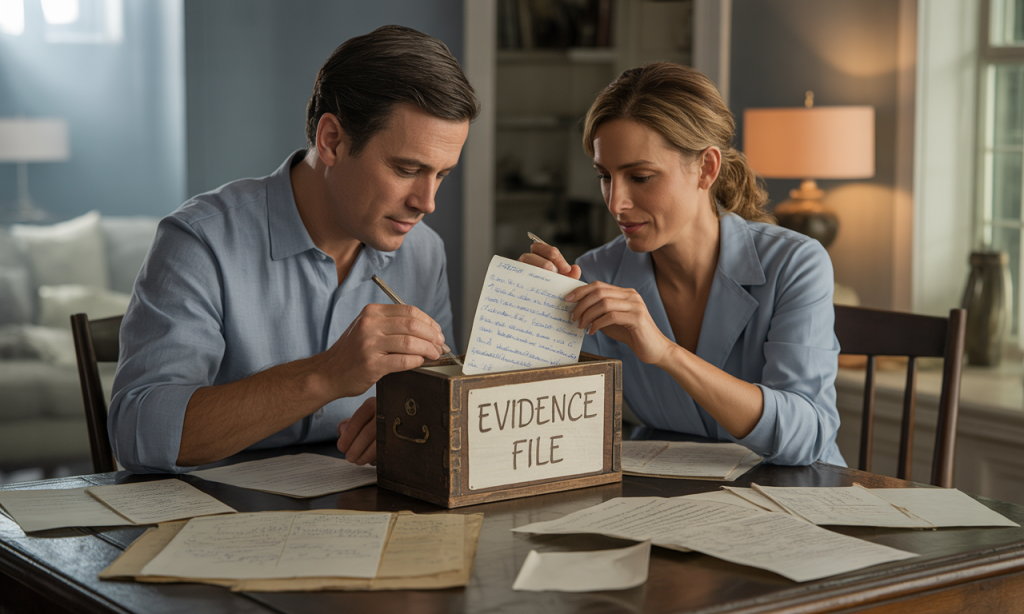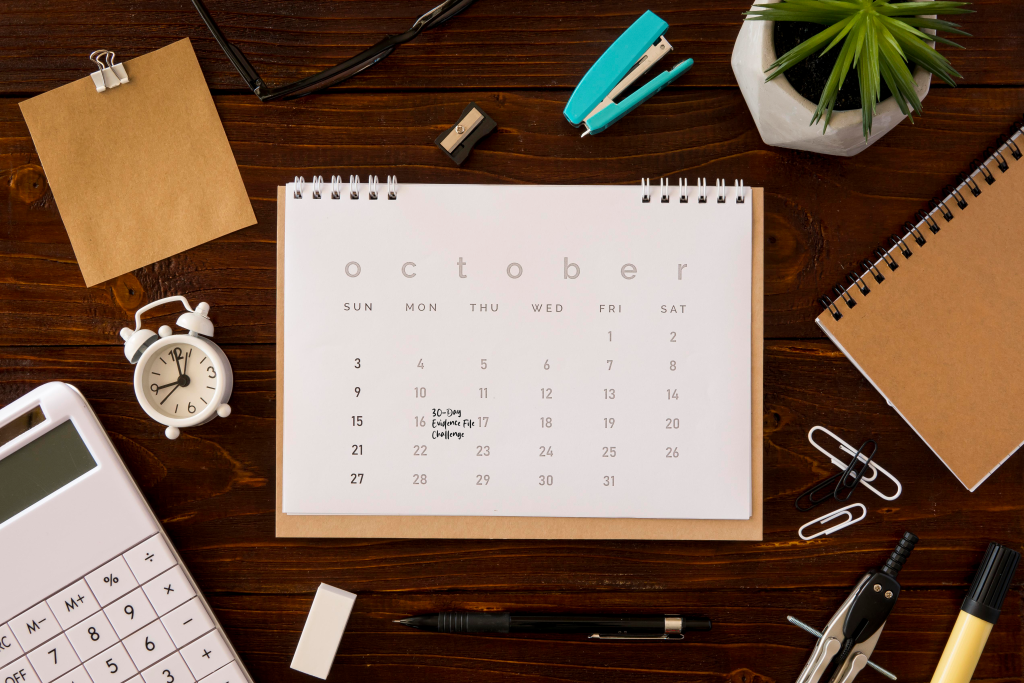The Evidence File: Building Proof That Love Still Lives Here
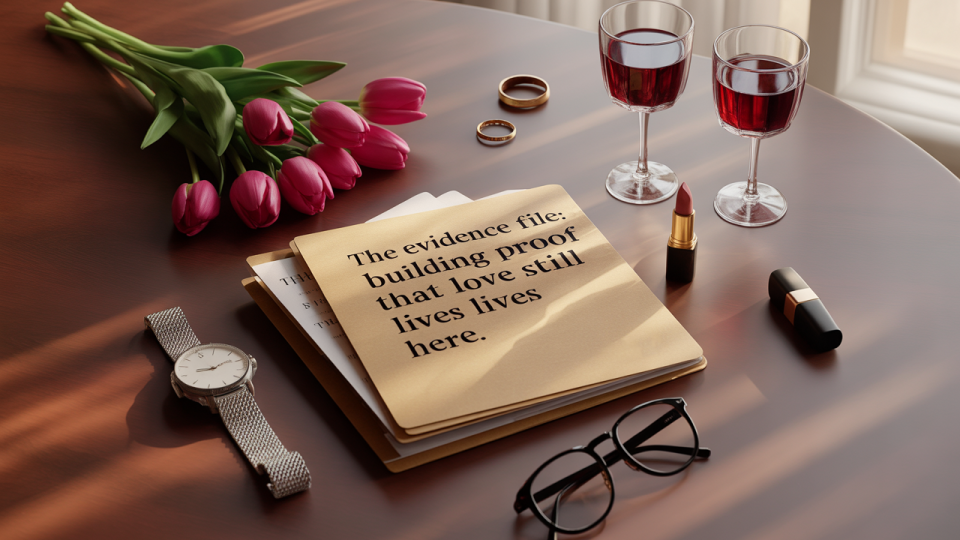
When days feel heavy and connection feels distant, it’s easy to start believing love has faded. But what if the problem isn’t the love—it’s the lack of evidence we’re paying attention to? The Evidence File is a simple practice that helps you collect proof that love still lives in your marriage, even during discouraging seasons. Instead of replaying what’s wrong, you’ll start noticing God’s goodness, small acts of care, and moments that quietly say, “We’re still choosing each other.”
Why You Need an Evidence File in Marriage
 When tension runs high or fatigue lingers, your mind naturally starts compiling a different kind of evidence—the “case against your spouse.” Every forgotten task, missed tone, or late reply becomes another reason to believe you’re drifting apart. This is how marriages quietly erode: not from one big betrayal, but from the slow accumulation of unchallenged assumptions.
When tension runs high or fatigue lingers, your mind naturally starts compiling a different kind of evidence—the “case against your spouse.” Every forgotten task, missed tone, or late reply becomes another reason to believe you’re drifting apart. This is how marriages quietly erode: not from one big betrayal, but from the slow accumulation of unchallenged assumptions.
The Evidence File flips that script. It’s a conscious act of resistance against emotional amnesia. It says: We refuse to forget what’s good.
Collecting proof of love doesn’t mean denying the hard things; it means balancing the emotional data. If your heart is a courtroom, you’re giving love a fair trial again.
This principle pairs naturally with The Memory Bank: Saving Good Moments for the Days You Forget. The Memory Bank stores joy; the Evidence File proves it’s still active.
What Counts as “Evidence” of Love
Not every form of love shouts. Sometimes it’s as quiet as a refill of your water glass, a text that says “home soon,” or a spouse fixing the leaky faucet without fanfare.
Evidence of love includes anything that points to ongoing care, effort, or faithfulness—especially when feelings waver. Examples:
- The way your spouse still checks the locks before bed.
- A prayer whispered when you didn’t have words.
- Shared laughter over something simple.
- A compromise made in silence.
- The groceries that show up on the counter without being asked.
In short, evidence is not perfection—it’s presence. It’s the proof that even when emotions fluctuate, commitment remains in motion.
In Anchor Objects: Little Things that Trigger Big Love, you learned how physical cues can anchor affection. The Evidence File builds on that by anchoring memory—capturing moments before they fade under the weight of busy days.
How to Build Your Evidence File
The Evidence File works best when it’s both practical and personal. You can create it as a shared notebook, a folder on your phone, or a small box of physical notes.
Step 1: Choose Your Format
- Physical File: A small wooden box, jar, or envelope works beautifully. Write each piece of evidence on a card and drop it in.
- Digital Folder: Create an album or note file titled “Evidence File” for quick captures—screenshots, voice memos, or text snippets.
Step 2: Set a Rhythm
Commit to adding at least one new piece of evidence each week. It could be something you noticed about your spouse, something God did for your marriage, or something you overcame together.
Step 3: Review Regularly
Every month, read your entries together. End with gratitude—thank each other, and thank God.
This is not a scrapbook of sentiment—it’s a living testimony of faith and perseverance.
To keep it consistent, pair it with your Design Your Marriage Rhythms: The Rituals & Resets Handbook routine. Add the Evidence File review to your monthly check-in or Sabbath rest day.
The Psychology of Proof
 When life feels uncertain, your brain craves evidence to justify how you feel. If you’re discouraged, you’ll subconsciously scan for confirming details. But if you start feeding it different data—real, visible examples of love—your perception begins to shift.
When life feels uncertain, your brain craves evidence to justify how you feel. If you’re discouraged, you’ll subconsciously scan for confirming details. But if you start feeding it different data—real, visible examples of love—your perception begins to shift.
Neuroscientists call this selective attention: the way your focus determines your emotional reality. The Evidence File retrains your focus from criticism to appreciation.
Over time, this habit changes more than your mindset; it changes your marriage’s atmosphere. Gratitude becomes the default background noise.
If you’ve practiced Celebrate the Ordinary: How Noticing Small Joys Changes the Mood of Your Home, you’re already halfway there. That post builds the daily noticing muscle; the Evidence File gives it a structure to live in.
Spiritual Layer: Seeing God’s Fingerprints
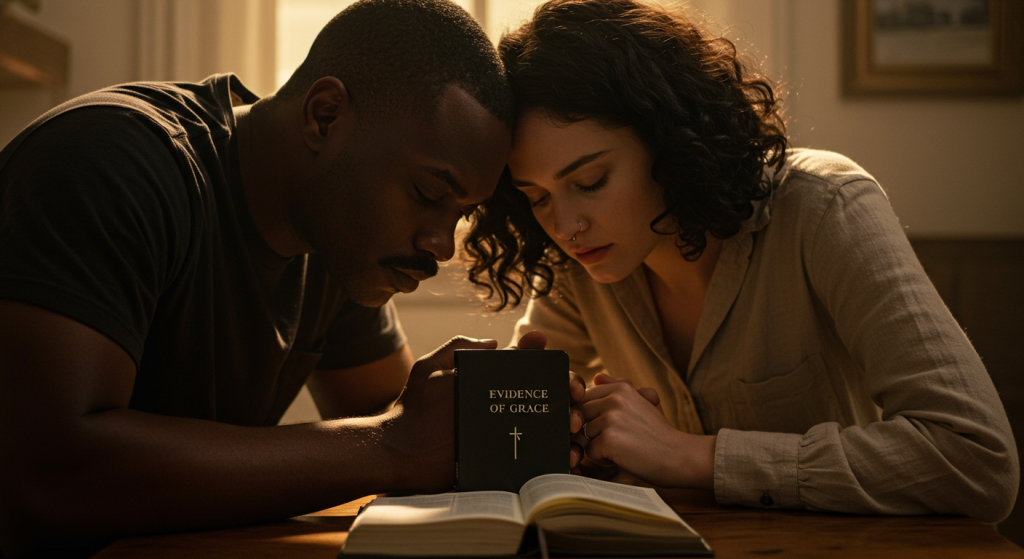 Beyond noticing your spouse’s efforts, the Evidence File is a way to see God’s ongoing goodness in your shared story.
Beyond noticing your spouse’s efforts, the Evidence File is a way to see God’s ongoing goodness in your shared story.
- The timing that worked out “just right.”
- The conversation that softened both hearts.
- The unexpected provision when you were stretched thin.
- The peace that returned after prayer.
These aren’t coincidences—they’re fingerprints. The Evidence File reminds you that love’s survival isn’t just human effort; it’s divine grace.
In Faithful Remembering: Spiritual Practices to Recall God’s Goodness in Marriage, we explored four practices to keep God’s faithfulness in focus. Think of your Evidence File as one more altar—stacking daily stones of gratitude.
How to Capture Evidence During Conflict
 During arguments or distance, the last thing you feel like doing is collecting proof of love. But that’s exactly when it matters most.
During arguments or distance, the last thing you feel like doing is collecting proof of love. But that’s exactly when it matters most.
When emotions run high, take five minutes apart and do this:
- Pull out your Evidence File.
- Read three random entries.
- Pray, “Lord, remind me what’s still true.”
This short reset doesn’t erase conflict—it reframes it. It helps you argue as teammates who’ve built something worth protecting, not as enemies defending separate walls.
If you want a complementary practice for de-escalation, use The Five-Minute Rewind: A Micro-Practice for Hard Days. Start with your Evidence File, then follow it with that guided reflection for a full reset.
How to Keep It From Feeling Forced
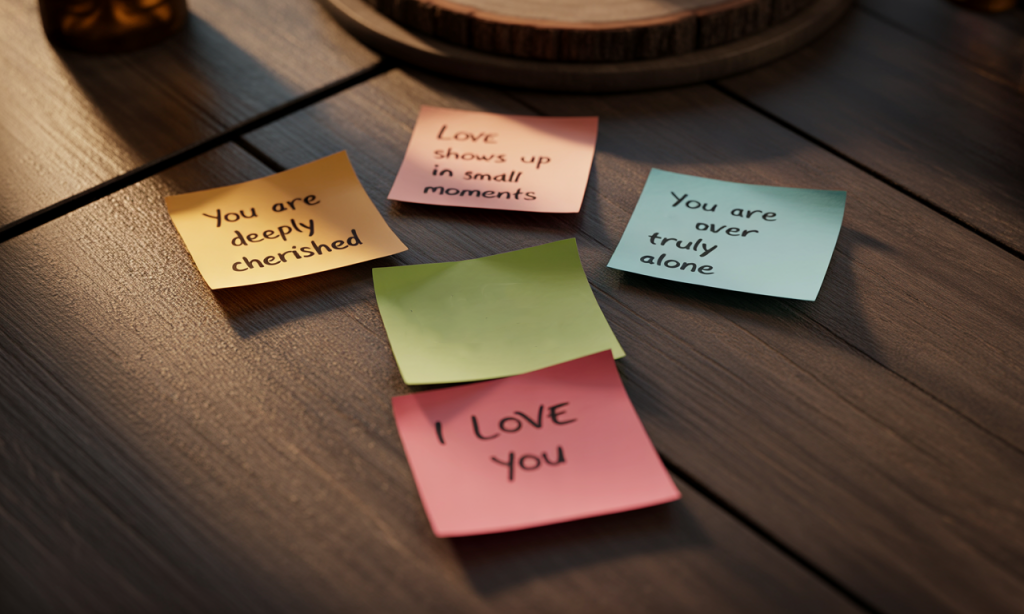 Some couples worry that tracking love makes it feel mechanical. The key is tone—treat it as noticing, not performing.
Some couples worry that tracking love makes it feel mechanical. The key is tone—treat it as noticing, not performing.
The Evidence File isn’t about proving your spouse is “doing enough.” It’s about acknowledging that love still breathes, even when you can’t feel its full warmth.
Here are ways to keep it natural:
- Record observations without commentary. (“He refilled my gas tank.”)
- Keep entries short and unfiltered.
- Rotate who adds to it each week.
- Don’t make it a scoreboard—make it a thank-you list.
Over time, it becomes second nature. You’ll find yourself thinking, That belongs in the file—a subtle but powerful shift toward gratitude.
The “Blind Spots” You’ll Discover
As you build your file, you’ll notice something surprising: you weren’t seeing the full picture before.
The Evidence File reveals:
- Quiet ways your spouse loves differently than you do.
- The resilience you’ve built through hardship.
- The way God keeps showing up in small mercies.
Sometimes, love’s evidence is hidden not because it’s absent—but because it speaks a different language. One spouse shows love through service, the other through encouragement. The Evidence File teaches both to recognize the other’s dialect.
In this sense, it’s not just a record—it’s a translator.
You’ll see this theme echoed in From Friends to Forever: Using Your Origin Story to Stabilize Today, where couples rediscover early clues about how they each express care.
A 30-Day Evidence File Challenge
If you want to kickstart this habit, try a one-month challenge:
Week 1: Collect three small examples of love—daily tasks, prayers, or gestures.
Week 2: Add three signs of God’s provision.
Week 3: Include three ways you’ve both grown.
Week 4: Revisit and read aloud your top five entries.
Then ask, “What surprised us most?” and “What does this tell us about where we’ve come from?”
If you’d like to capture these visually, pair the challenge with your 30-Photo Highlight Reel. It helps connect words with images, turning the practice into something both emotional and tangible.
The Faith Perspective: When Evidence Becomes Worship
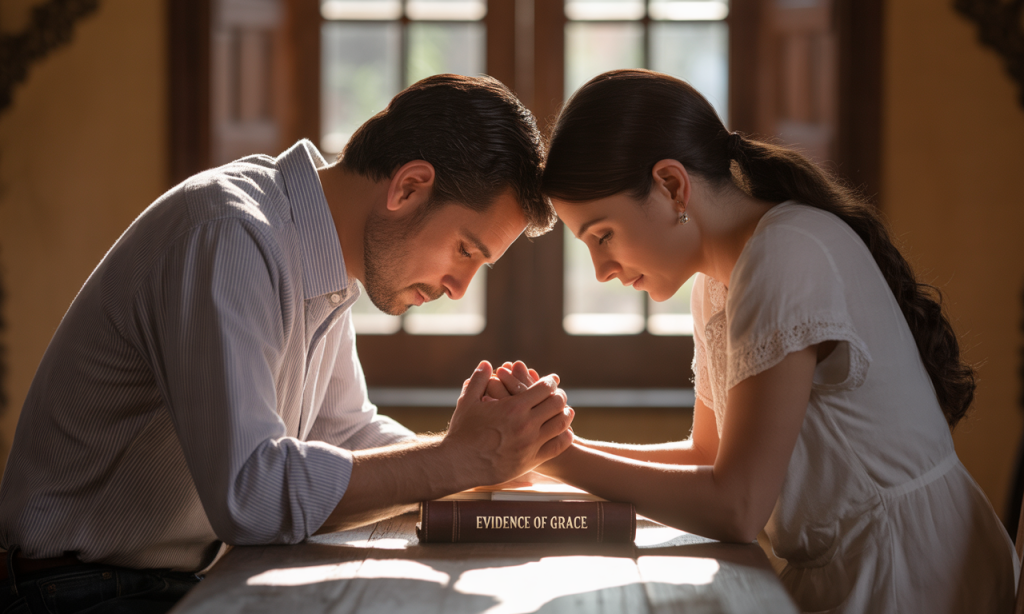 When you fill your Evidence File, you’re not just collecting notes—you’re collecting testimonies. Each card, each sentence, each moment of “we made it through that” becomes worship in disguise.
When you fill your Evidence File, you’re not just collecting notes—you’re collecting testimonies. Each card, each sentence, each moment of “we made it through that” becomes worship in disguise.
Faith grows when you track God’s consistency. Gratitude deepens when you name His presence. Love steadies when you see what He’s already done.
The Evidence File becomes a bridge—linking your marriage story to God’s story.
For couples of faith, this practice can close with a simple shared prayer:
“Lord, remind us that You’ve been faithful before, and You’ll be faithful again. Let our evidence testify to Your goodness.”
To go deeper with this approach, read Faithful Remembering: Spiritual Practices to Recall God’s Goodness in Marriage. Together, these posts form a complete guide to spiritual gratitude and emotional stability in marriage.
Bringing It All Together
 When love feels quiet or effort feels invisible, the Evidence File reminds you that silence isn’t absence—it’s subtle faithfulness.
When love feels quiet or effort feels invisible, the Evidence File reminds you that silence isn’t absence—it’s subtle faithfulness.
Every marriage needs a place to store proof that love still lives here. Because when you look back later—on the hard seasons, the weary days, the moments you almost gave up—you’ll find more evidence than you expected.
And when you see it, you’ll realize: God never stopped working, and neither did we.
Start small today. Write one sentence that proves love showed up. Then put it somewhere safe. You’re building not just a record—but a reason to keep believing.

